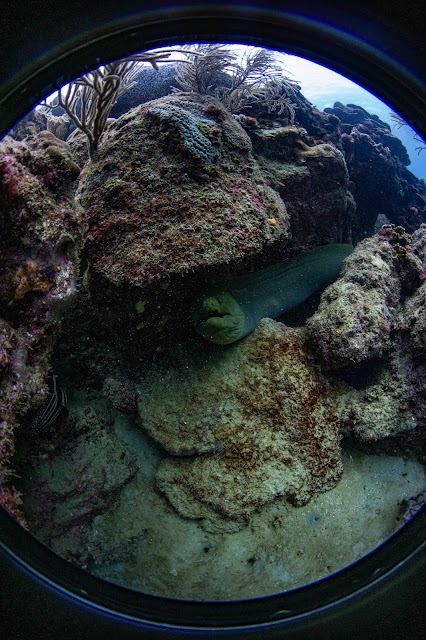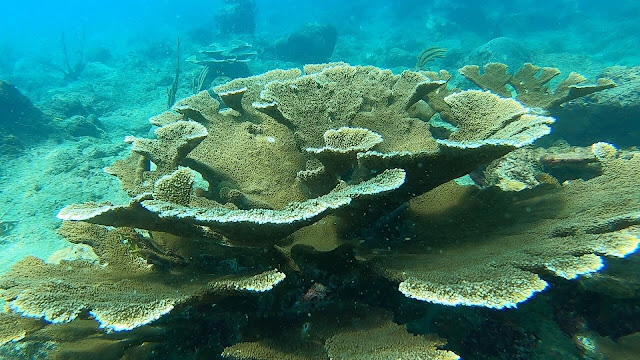The Mystical Oilbird
Before there was oil from the ground, there was this bird. Rarely seen in the day, this mystical creature forages at night. Faraaz Abdool tells us about the bird that once was a source of energy for the early inhabitants of our island.
The continental island of Trinidad shares virtually all of its ecology with South America, and this includes one of the strangest and most remarkable birds in the world. Like the superhero masquerading as an ordinary citizen, this is a bird that can easily be overlooked. It lacks many of the avian attributes that enrapture us: no iridescence of the hummingbird nor powerful talons of the hawk-eagle, for example. The constant lesson in nature, however, is to look deeper. Nowhere is this truer than with the Oilbird.
Few people have ever seen an Oilbird, regardless of its resident status on Trinidad. Undoubtedly due to its strictly nocturnal habits. In fact, Oilbirds live virtually their entire lives in total blackness. During daylight hours, they roost in caves where there is little to no light, emerging to forage after sunset. They are surprisingly large creatures, with a wingspan that can exceed one metre. These long, powerful wings carry them great distances on nightly foraging missions, sometimes more than 100km in a single journey. We may be familiar with similar looking birds such as potoos and nightjars - cryptic birds that spend the day expertly camouflaged, emerging at night to hunt nocturnal insects on the wing. Many of these birds occupy a relatively tiny range, within which they roost, feed, and reproduce. Why, then, would the Oilbird need an expansive territory to survive?
 |
| The “whiskers” seen here are rictal bristles which can aid in close-range tactile perception of their surroundings. Photo by Faraaz Abdool |
The answer lies in the diet of the Oilbird: fruits! The Oilbird is the only fruit-eating, nocturnal bird that is capable of flight on the planet. But this enigmatic bird cannot simply eat any fruit; Oilbirds feed exclusively on fruit of trees from three specific families, namely palms, laurels, and bursera trees. In a forest as diverse as ours, they must travel extensively for sustenance as a result. They are crucial vehicles for the propagation of their food trees, offering a transportation service for heavy and otherwise immobile seeds. The floor of their roost cave is often littered with seeds, many of these are taken by flowing water to destinations further still. Oilbirds sometimes roost outside of their usual cave dwellings. In Trinidad they have been seen asleep on moss-covered boughs deep in the Northern Range as well as on buildings, utility poles, and several other unexpected locations. Wherever they turn up, they tend to cause quite a stir among human observers if discovered. There is nothing wrong with a nocturnal bird that’s asleep in the day, or where daylight finds it! At dusk, it will rouse itself, stretch, defecate, and fly off into the night. There is no need to intervene, doing so can cause the bird tremendous stress.

Healthy populations
of palms including açaí (pictured here) are crucial for the survival of not
only the Oilbird, but many other species such as these Red-bellied Macaws. Photo
by Faraaz Abdool
One of the reasons why Oilbirds sleep during the day, and by extension why they avoid daylight altogether, is that their eyes are incredibly light sensitive. We may think of owls as having special powers of sight at night, but the eyes of Oilbirds are on another level entirely. With a retinal rod density of one million rods per millimetre, their eyes are by far the most light sensitive of all vertebrates. Their internal eye structure is similar to that of fish found in the deep ocean, such is their level of adaptation to darkness. While this supreme vision helps them navigate in the dark, it does not give them the sharpest picture of their surroundings. Oilbirds also use echolocation. Yes, you read that correctly. Each bird emits a series of clicks, just like bats - albeit at a lower, human-audible frequency - and their keen sense of hearing gives them the details missed by their eyes. Oilbirds are social animals, and to avoid confusion when echolocating, the clicks of each bird differ slightly on the frequency spectrum. It may sound cacophonous to us, but it is a level of lucidity we cannot comprehend.
Their extreme sensory capabilities do not end here. Once the birds depart at dusk and begin foraging, neither sight nor echolocation can provide any meaningful assistance to find a fruiting tree several kilometres away. To find their preferred fruit, Oilbirds rely on their powerful sense of smell. Following rivers of scent that course through and above the canopy, they easily hone in on ripe bunches of fruit - no matter how distant or obfuscated.
Their social lives are equally complex. Oilbirds live in large groups that can number in the thousands. In the Cueva de las Guácharos National Park in neighbouring Venezuela, Oilbird flocks can approach 10,000 individuals. Adult birds form permanent, monogamous pairs, raising broods of 2-4 chicks in a nesting season that loosely follows periods of high food abundance in the surrounding forest. At all stages of their offspring’s life, both parents share duties.

An Oilbird on a
ledge at Dunston’s Cave, Asa Wright Nature Centre. Photo by Faraaz Abdool
Here in Trinidad, Oilbirds can prove difficult to encounter. Dunston’s Cave at Asa Wright Nature Centre stands out as being one of the most accessible locations in the world to experience this near mythical beast, but there are colonies of Oilbirds scattered across Trinidad’s rugged Northern Range. Among birders, the Oilbird is a coveted target, therefore its existence is an ecotourism attraction to this country.
Sadly, despite all its amazing features and abilities, the Oilbird’s name arises from the reductionist, utilitarian view of the human-centric perspective, where a creature’s existence is directly tied to its ability to bolster or serve shortsighted human purpose. Baby Oilbirds can be larger than the adults, engorged on oily, fatty fruits, they remain cavebound during the first few months of their lives. It is here that they are easy prey for humans who simply grab them off the cave ledges. In the past, the oil of the chicks would be used as fuel – for light and cooking - and adults would be eaten. We would be happy to say that this practice is long gone, there are still people who enter Trinidad’s remote cave systems, re-emerging with crocus bags filled with Oilbirds.
Surely it’s time we learned that flora and fauna are not to serve man, but to live alongside; perhaps then we will have a fighting chance of survival in the long term.
References
Brinkløv S, Fenton MB, Ratcliffe JM. Echolocation in Oilbirds and swiftlets. Front Physiol. 2013 May 28;4:123. doi: 10.3389/fphys.2013.00123. PMID: 23755019; PMCID: PMC3664765.
Bosque, C., A. A. del Risco, and A. Echeverri (2024). Oilbird (Steatornis caripensis), version 2.0. In Birds of the World (F. Medrano, B. K. Keeney, T. S. Schulenberg, and S. M. Billerman, Editors). Cornell Lab of Ornithology, Ithaca, NY, USA.




